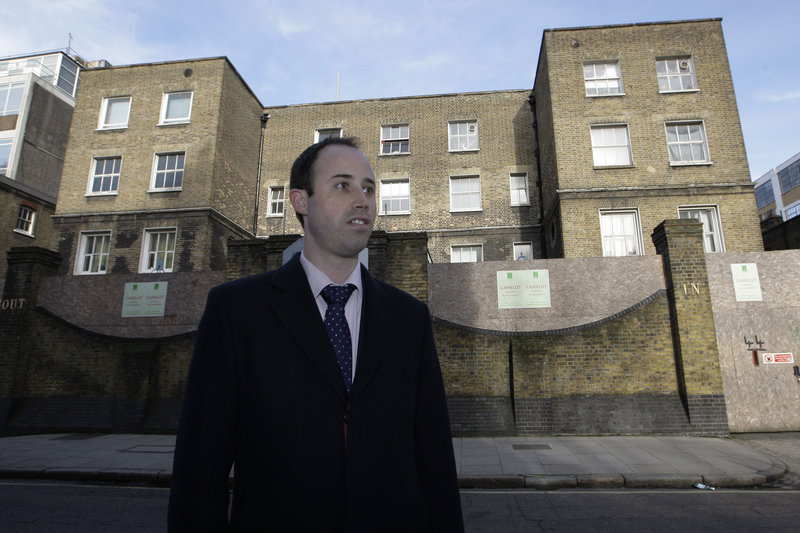LONDON – It’s a battered brick building behind a high wall in London — austere, overlooked and scheduled for demolition.
Look closer, and it’s linked to one of Britain’s greatest authors, as well as to a shameful period in the nation’s social history.
Two centuries ago, this neglected London edifice was a workhouse where the city’s destitute labored for rations of gruel. Their plight inspired social reformers — including a neighbor, Charles Dickens, who likely used the building as inspiration for his novel “Oliver Twist.”
Advocates hope the newly discovered link to the novelist will help them win their uphill battle to save the building from developers who plan to tear it down and build new apartments, and from a local lawmaker who has branded it an ugly relic of an inhuman institution.
“We wouldn’t think of demolishing Georgian stately homes, squares and terraces where the upper class lived,” said Nick Black, a historian and academic who is battling to save the structure. “It’s also important that we keep some vestiges of the 18th-century world of the impoverished and the poor.”
The former workhouse in the Fitzrovia neighborhood — most recently part of a hospital that closed in 2005 — is one of hundreds of run-down Georgian and Victorian buildings that Londoners pass without a second glance.
Built in the 1770s atop a paupers’ burial ground, it once was home to 500 unfortunate citizens who could not afford to feed themselves and had to rely upon the meager charity of the state. Under a stone carving exhorting them to “avoid idleness and intemperance,” they worked at menial tasks, ate watery gruel and lived in quarters half the size of jail cells.
It’s a setting known to millions from “Oliver Twist,” in which the workhouse hero Oliver, “desperate with hunger, and reckless with misery,” tremblingly holds out his bowl and says “Please, sir, I want some more.” The book, published in 1838 when Dickens was 26, helped awaken affluent Britons to the horrors of the workhouse.
Those pressing to save the building have taken heart from new research revealing that Dickens, whose own childhood was scarred by poverty and instability, lived just nine doors away between the ages of 3 and 5 and again between 17 and 20, when he was starting his career as a journalist and a writer. The link had been overlooked because the street has since changed names.
“We had suspected there was probably a Dickens connection, but we had no proof,” said Aimery de Malet, another campaigner. “It was the final thing that really tied everything together.”
Britain’s new Conservative-led government has agreed to take a second look, and says it will make a decision by early March.
De Malet says campaigners don’t want the building turned into a museum, simply “a sensitive redevelopment” that preserves its architecture and heritage.
“We would be happy if there was a single glass box commemorating what was there in the past,” he said.
Send questions/comments to the editors.



Success. Please wait for the page to reload. If the page does not reload within 5 seconds, please refresh the page.
Enter your email and password to access comments.
Hi, to comment on stories you must . This profile is in addition to your subscription and website login.
Already have a commenting profile? .
Invalid username/password.
Please check your email to confirm and complete your registration.
Only subscribers are eligible to post comments. Please subscribe or login first for digital access. Here’s why.
Use the form below to reset your password. When you've submitted your account email, we will send an email with a reset code.